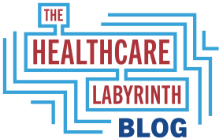This is one of a number of blogs that will appear on my daughter. I call her Kitty. She is a wonderfully talented, bright, and empathetic individual in her late ‘20s. She and I agreed I would write this series to impart how important health coverage is. Not only is her decision to have surgery courageous, but so is her decision to share her journey through me.
The principal reason to share the journey is because we both want to explain what many average Americans go through financially when they have major operations and do not have the best insurance or no insurance at all. My daughter is privileged to come from a well-off family and to have consistent and robust insurance. This will mean that she will pay a tiny amount for a surgery with a sticker price in the hundreds of thousands of dollars. But for uninsured and underinsured Americans, the costs of such a surgery could literally bankrupt them. In the alternative, they would forego important medications and the surgery altogether. My daughter has not had to do that, but millions of Americans do each year.
Throughout this series, we will give you updates on Kitty’s surgery and progress as well as share her health insurance journey, the bills she receives, the amount she pays, and calculate what someone who is uninsured and underinsured might pay. As well, since she has a connection to the United Kingdom, we will compare and contrast the U.K. and American healthcare systems.
For an overview of my daughter’s condition, go to Part 1: https://www.healthcarelabyrinth.com/part-1-my-courageous-daughter-is-having-brain-surgery/
Today: the day of surgery
Today is the day of surgery. Kathleen will go into the hospital at about 9:30 AM for a series of pre-op activities. She will go into surgery between 12:00 and 1:00 PM. The surgery will last about 3.5 hours and then there will be several hours of post-op recovery. I will update this blog later today once she is in recovery.
Estimates of her costs and what others might pay
While insured patients are not technically required to receive good-faith estimates of costs under the No Surprises Act, my daughter did receive disclosures from her hospital and surgeon. Providers right now are only required to disclose to the uninsured and some limited groups of insured patients, but many of them practice disclosure to all patients. Health plans will be required down the road to disclose as well.
The disclosure from the hospital included only its estimated billed charges – no allowed amount from the plan that is expected – and the estimated cost-sharing. The disclosure from her surgeon gave a range for billed charges, referenced an expected allowed amount from her insurer, as well as estimated cost-sharing.
As we all know, the pricing system in the United States is complex and I would say unseemly. Providers set obscene billed charges and then negotiate discounts with insurers. So knowing exactly what will be paid is difficult sometimes, especially for complex procedures. Beyond the hospital and the surgeon, we know that there is one definite additional provider (anesthesiologist) and perhaps a few others — a pathologist/pathology lab (a precautionary test; may be handled by the hospital itself), an attending neurologist in ICU, and an attending hospitalist/internist in the ICU. No disclosures were made for them. Oftentimes, even in elective procedures, an anesthesiologist and pathologist could be out-of-network. Under the NSA, though, the final payment is between the provider and an insurer or perhaps decided by an arbitrator.
So, in our effort to educate on how the uninsured and underinsured are impacted by our obscene pricing and fee negotiation system, my daughter and I are sharing what we know so far.
Here is what I did
I am seeking to give a directional feel for what various costs would be for certain stakeholders. I have estimated (some time in ranges) final payments for the following and compared them to my daughter’s policy and costs. To refresh: we purchased her an unsubsidized Platinum plan on the Exchange when she turned 26. We bought this due to the high costs of her maintenance drugs as well as the chance that surgery might be needed:
Coverage use cases:
- An uninsured (assuming no concessions due to upfront cash payment)
- An underinsured individual not receiving major premium subsidies or any cost-sharing subsidies. I used Bronze and Silver plans as a proxy and show ranges. I chose these because they tend to have very high deductibles, high percentage cost-sharing, and high maximum out of pocket costs (MOOP). Despite my support for the Affordable Care Act (ACA) and what it has done positively, these can still mean huge expenses for individuals and families.
- A traditional Medicare fee-for-service (FFS) individual with no secondary coverage.
- A traditional Medicare fee-for-service (FFS) individual with Medicare Supplement. Keep in mind, the richest supplement policy can cost hundreds of dollars a month to close the Medicare inpatient and other gaps. The gap benefits also can vary greatly based on the type of product chosen.
- A Medicare Advantage (MA) plan (benefits can range throughout the nation and based on the type of plan someone has)
I did various research and went to my book, The Healthcare Labyrinth, to find other studies. While studies of the ratio of billed charges to commercial payments to Medicare FFS payments can be somewhat different, I settled on the following as reasonable averages:
Allowed amount assumptions:
- Hospital billed charges tend to be 2.5 to 3 times Medicare payments. For the chart below, I used 3 times.
- Physician billed charges tend to be about three times Medicare payments, although this is a low mean (certain specialties can be well above this. Still I used 3 times as well for the chart.
- Commercial payments to hospitals are about double Medicare FFS payments. I used 2 times.
- Commercial payments to physicians are about 150% of Medicare FFS. I used 1.5 times.
So what do we know so far from the cost estimate disclosures
Her hospital indicated that its billed charges for the procedure and one day in the hospital is $242,962. Her estimated cost-sharing for one inpatient day is $350.00. This matches her insurer’s summary of benefits.
Her surgeon estimated his charges would be up to $15,135, with an estimated allowed amount from the insurer of $7,339. The estimated cost-sharing was $0.00 and that matches her insurer’s summary of benefits. Note that the estimated allowed amount comes in very close to my assumptions above: Billed charges ($15,135) times .33 (Medicare payment equals about one-third) = $4,995 times 1.5 (commercial payments are about 150% of Medicare FFS) = $7,492. This is just $153 different than what the provider says.
Both my daughter and I observed that we did not think the billed charges or allowed amounts for the surgeon were particularly out of line. He is a professional with profound expertise and performing risky surgeries. On the other hand, we did think the billed charges for the hospital were quite obscene. In fairness, this is not an indictment of our hospital but of the hospital pricing system as a whole. And putting my former hospital board member hat on (I was on both an academic medical center’s and children’s hospital’s board), today’s surgery was complex, the hospital uses the latest GPI-based MRI precision technology during surgery to lower risks, follow-up ICU care is involved, and the hospital has an overall great reputation and profound expertise.
Below is a chart that shows the coverage use cases, information on benefits, estimated billed charges, estimated allowed amounts, and estimated out-of-pocket costs for the known services so far (minus anesthesiology, pathology, and attending physicians in the ICU). We are assuming right now costs for 2 specialist visits, 2 advanced MRIs, surgeon costs, and hospital costs. We will include any other physician costs when we get finalized bills and explanations from her insurer. We are assuming her hospital stay will be 1 to 3 days.
Here are very rough estimates on allowed amounts for the major services. I computed estimates for other services in the table and added them to the various columns. Please note that, although we used national ratios, we feel the commercial allowed amount feels high and we may need to update this figure in a future blog.
- Medicare for Hospital — $80,987
- Medicare for Surgeon — $5,045
- Commercial for Hospital — $161,974
- Commercial for Surgeon — $7,492

Conclusion
While we paid a great deal for the gold-plated insurance for Kitty, you can see her out-of-pocket costs were minimal for a very complex surgery. Looking at the Medicare use cases, while $3,000 appears reasonable for a bare Medicare FFS enrollee, it can be a major issue for fixed income seniors and the disabled. The underinsured use cases are very worrisome. With little premium subsidy, these folks pay a heavy share of the premium and then would be on the hook for up to $9,500 in cost-sharing. But it is an uninsured who is truly devastated. While he or she could hope for some sort of break, more than likely providers would sue the individual. He or she would face a lifetime of debt simply due to a bad medical situation and obscene provider pricing.
#healthcare #healthcarereform #coverage #aca #exchanges #medicaid
— Marc S. Ryan
2/22 — 5:00 PM Update — My daughter is out of surgery, coherent, and talking. The removal of the malformation was successful with no impacts. She will spend the night in ICU, a precaution done for all brain surgeries. I am ready to settle in on a very short sofa in the room, but delighted things went well. Thanks for all the positive messages as well.
2/23 — 7:00 PM Update — My daughter did so well in recovery that she is home. It is amazing how healthcare technology means patients can return home so quickly after major surgery. There will be a two to three month full recovery timeframe. We will devote a blog in the near future to the hospital experience. Thanks again for all the positive messages.





